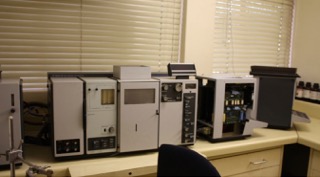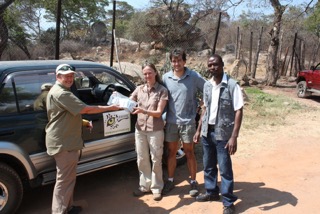 |
| Dr Helen Jones on safari. |
I met Dr Jones
through the Australian Veterinary Association’s wellness stand at the annual
conference. I didn’t know then that she was the first woman to be elected
president of the Australian Veterinary Association in 1982. Among other things
she was Associate Professor in Public Health at Curtain University. In 2014 she was awarded the AVA's Presidents Award for her contributions to the profession. She's also an avid volunteer.
Dr Jones has a
career history of service, so it’s not surprising she’s lending her support to a
species in need. She talked to us about her interests in the wellbeing of
veterinarians and why rhinos need our support.
Can you tell us a bit about your current work?
My PhD research was
on injury, zoonotic diseases and stress that vets experience. I discovered that
suicide was a major problem, certainly in Victoria and WA. I have continued to
work with the team involved with suicide prevention mainly Brian McErlean here
in Perth. We run the Wellness Centre at
the annual AVA Conference with an emphasis on mental wellbeing (and thus suicide
prevention). To encourage vets to come
into the Wellness Centre, I have arranged for a fitness company to come in and
do wellness checks on vets and exhibitors including blood glucose, cholesterol,
heart rate and blood pressure. [Ed: I’ve
had it done. Note to self – eat the jelly beans AFTER the blood glucose test this
year].
A few years
prior to my retirement from Curtin University in 2010, I became involved with
the SAVE Foundation (Save the Black Rhino Foundation). The Foundation works
almost exclusively in Zimbabwe. We
have expanded its title to SAVE the African Rhino (SARF) because we also help
out in South Africa, Namibia etc. I first
went on safari in 2010 where I learnt a lot about the SAVE Foundation and its
work.
Why do you do all this?
Difficult to
answer why I do it. I guess I am just committed
to volunteering for great causes.
Veterinarian well-being is the most important and then the rhinos. I am also heavily involved in Rotary. I ran a Rotary Club of Canning Bridge Arts
and Craft Market once a month for two years.
I am now the Secretary of my local Rotary Club.
I have visited
the Zimbabwe Veterinary School in Harare several times now. The first
impression in 2009 was that it was poverty struck. No journals from 1990 and no access to
computers. Their laboratory equipment
was all broken. I tried to help them
with donations of books and to get a container of secondhand vet equipment over
there. That wasn’t successful but we
took over a few books and I worked to get them access to journals and on-line databases. They have since gained a few computers that
allow them to access the databases in the library. Initially they were being banned from
accessing these because of an international boycott.
 |
| Second-hand gear can mean the world of difference for vets working in areas of need. |
I have helped
some vets at the vet school get articles published in journals.
We support some
of the vets there with their dehorning programs for rhinos and with helping
procure Suprelorin from Peptech (now Virbac) for “sterilizing” lions to prevent
them from breeding.
 |
| Dr Jones hands over the supreloren. |
I have brought
as luggage an anaesthetic machine and three microscopes and a couple of
centrifuges (not all at once!). Some vets
have donated medicines.
I also lobbied
DFAT and written letters of support to help veterinarians in Victoria Falls receive
a $30,000 Australian Government grant to build wildlife and veterinary
facilities just out of Victoria Falls.
To raise money
for the SARF Activities, we hold an annual auction of sporting memorabilia that
last year raised close to $200,000, plus SARF run safaris which raise about
$100,000 per year. All told, SARF
(previously SAVE) has donated over $6 million (up to $500,000 per year) to
activities to primarily help save the rhinos from poaching. This involves paying to train the rangers,
providing them with uniforms, boots etc, camera traps, tracking devices and
vehicles (we probably have about 30 vehicles in Zimbabwe. We also contribute to cost of the dehorning
operations (involves hiring planes, helicopters, ground crew for horn removal).
It costs about $1500 per each dehorning.
How did you become interested in rhinoceros
conservation?
The rhino
numbers are declining. South Africa, especially Kruger National Park, has a
high rate of poaching with over 1000 rhinos poached for their horn in 2014. The
rate declined slightly last year (still above 1000) but the rate in other
African countries has risen (including Zimbabwe).
Why do rhinos need our help?
Poaching is rife
because of the demand from Vietnam and China for rhino horn. The current black market price is $60,000-
$70,000 per kilo. A big male probably has a horn around 4 to 5 kilos. By the way the local wage paid in Zimbabwe is
US$100-$200/month so getting involved in poaching is very tempting.
There is a campaign
run by a Melbourne based company called Breaking the Brand and it is focussed
on Vietnam to try to stop the demand [for rhino horn] from growing middle class
there. Rhino horn’s alleged purpose is
no longer about curing cancer, but is given as an exclusive gift to the rich. I would prefer our efforts to go into this
campaign. In the meantime, each safari
raises several thousand dollars for SARF.
How can vets help rhinos?
Vets can come on
safari to see the people we are supporting. It is not all hard work. Vets and their friends see wonderful wildlife
including many birds. The cost of the safari is relatively high but
all the money goes towards SARF. I pay my own way.
If you are interested in going on safari with Dr Jones
from August 22 to September 5, you can check out the program here.
